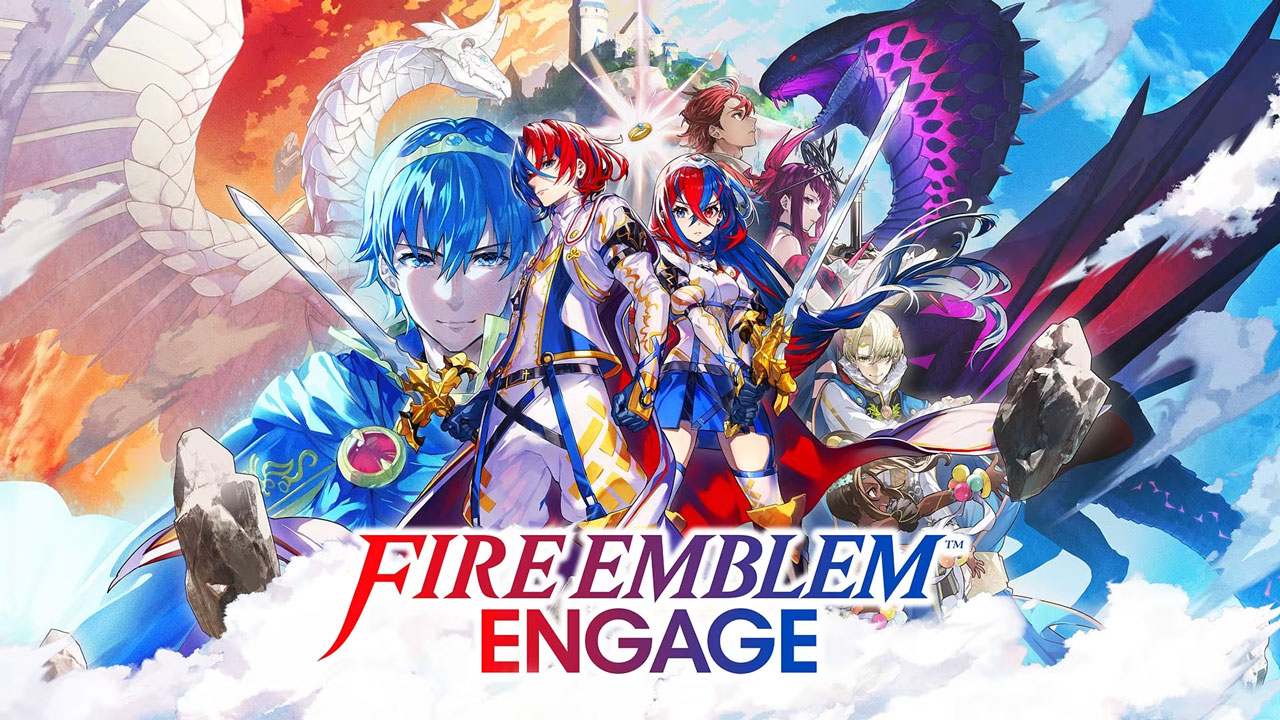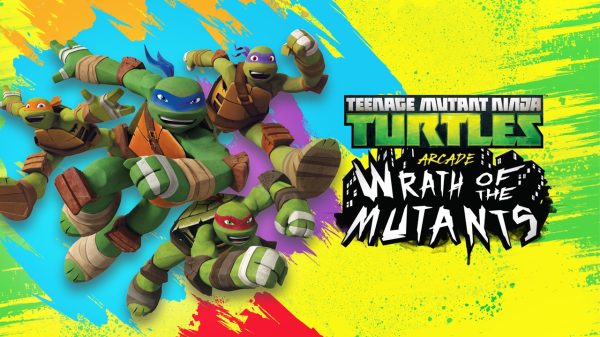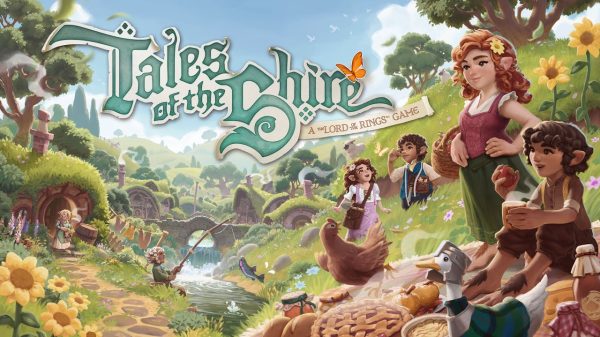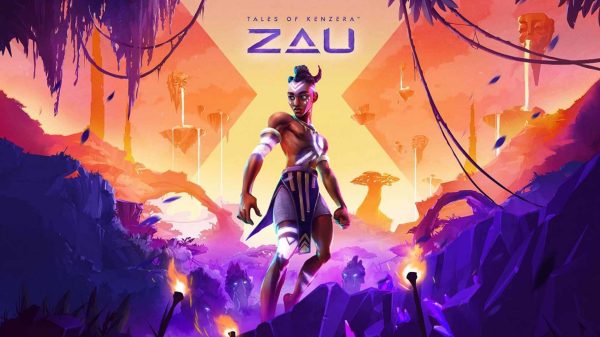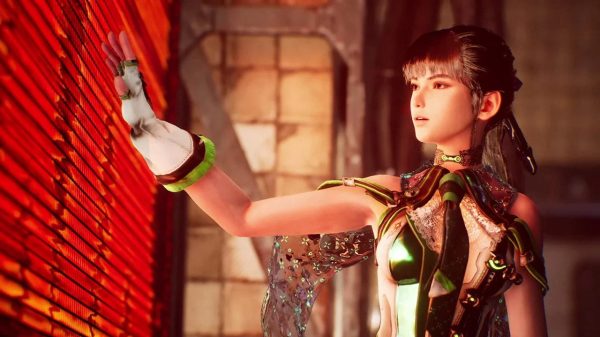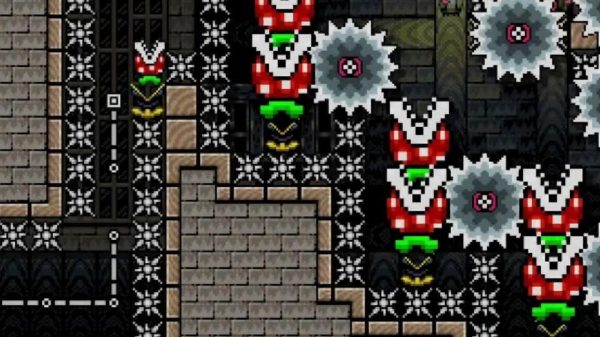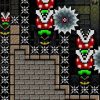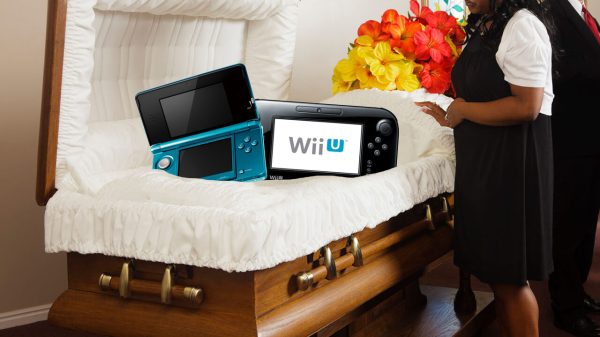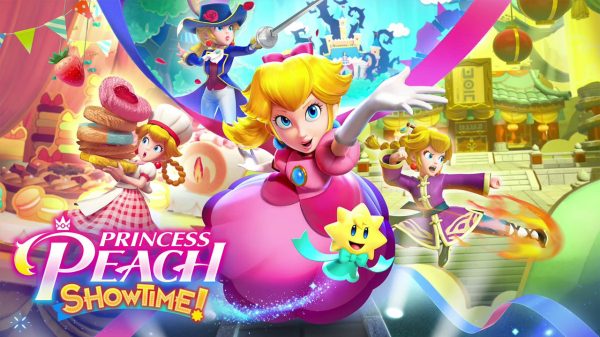Fire Emblem Engage is not a continuation of the formula laid down by Fire Emblem Three Houses. Instead, Fire Emblem Engage is a return to the more classic Fire Emblem design, focusing less on the social sim aspect and keeping things firmly fixed on the fighting.
There’s a notable section of the fanbase who found Three Houses too indulgent or unwieldy – who felt that its social sim stuff was too elaborate, and a distraction from the tactics-based combat that was the foundation of the franchise.
If you’re one of those fans, there’s every chance that you’re going to love Fire Emblem Engage. There is a lot of stuff to fight and a huge amount of customisation that allows you to create your own truly unique warband. If you don’t fall into that category though, you’re probably going to find a lot less enjoyment in Fire Emblem Engage. In attempting to address gameplay concerns, developer Intelligent Systems has tilted the careful balance between on and off field events. In the absence of strong character work and life-sim elements, Fire Emblem Engage shifts focus almost entirely to the current or next battle, and given that combat here is solid but often feels repetitive, it can be a struggle to remain engaged. There’s certainly a lot here to enjoy, especially for long-running fans of the series, but if you’re looking for the next step in Fire Emblem, you’re unlikely to find it here. This is a game that leaves it all on the battlefield, for better or worse.
Fire Emblem Engage begins as many a video game does: with amnesia. You awaken in a fancy looking bedroom surrounded by attendants. Despite your failure to remember anything, it turns out that you’re kind of a big deal. You are the Divine Dragon, a near-mythical force who reawakens every few hundred years to do battle with The Fell Dragon. Nap time is well and truly over when a tragic set of events sees you thrust into a broader conflict between kingdoms. There are five kingdoms in this world, each of them occupying a different stance in their relations with others, and each of them possessing a number of Emblem Rings. Your grand quest is to collect all 12 Emblem Rings, allowing you to harness their power to vanquish the Fell Dragon once and for all.
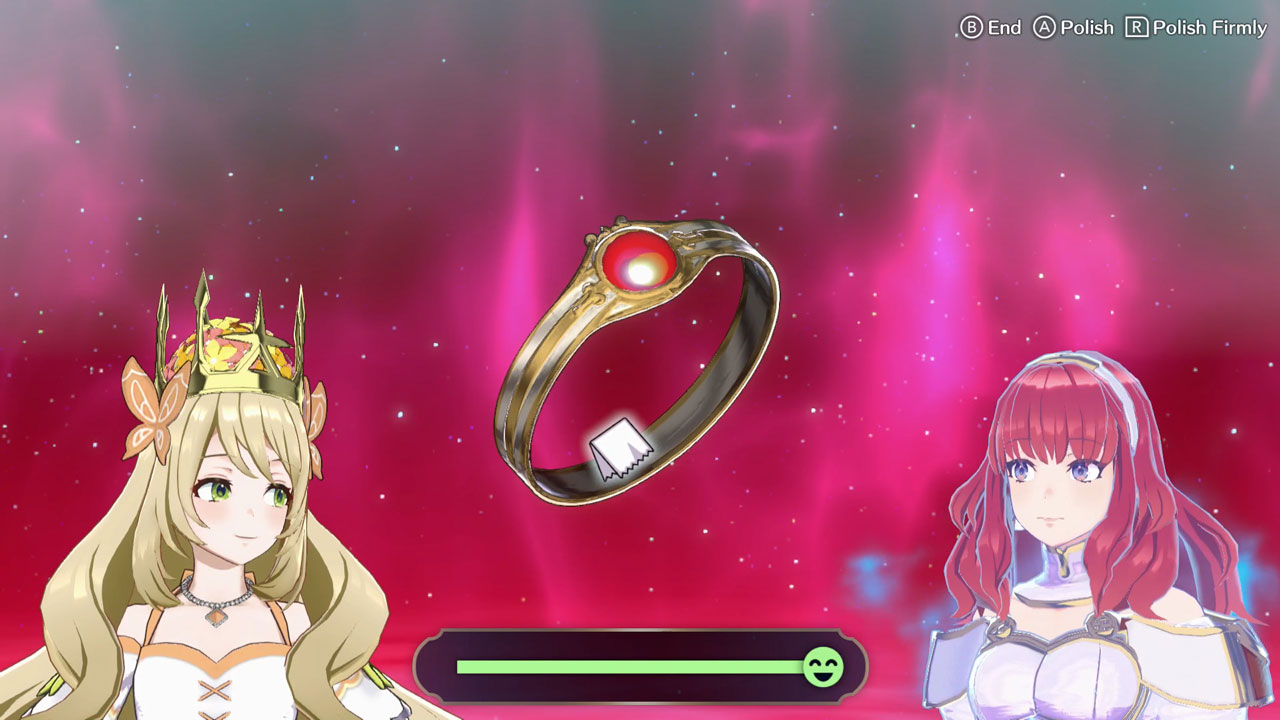
One of the biggest letdowns of Fire Emblem Engage is that the grand saga it spins is not at all interesting. Over the span of 50 or so hours you can expect all manner of explosive reveals, back-stabbing betrayals and serendipitous switching of sides, but none of it hits particularly hard owing to how thinly spread Fire Emblem Engage is in almost all of its narrative elements. The kingdoms are a good example; there are five of them, but you learn almost nothing about them other than one or two surface-level characteristics. ‘Oh, this is the kingdom that values learning’, and ‘this one is war-like’, and ‘this one has a Queen.’ It’s very one-dimensional and as you journey through these kingdoms, they never feel any deeper than their representation on the overworld map – just a place to house a few mission nodes and that’s about it.
The window into these kingdoms is meant to be the people you meet there, as each new mission introduces you to new faces who will invariably join you as an ally. Your first encounter with them frontloads their story, but you’ll get more of it if you bring them along during combat encounters. You can also give them gifts back at your base, and new support levels unlock brief exchanges between characters. There are three support levels for each character, and these exchanges can go anywhere from 30 seconds up to two minutes. That’s a maximum of about six minutes of interaction between each character on the roster because every character has a support level with every other character. This means that Intelligent Systems has had to write hundreds of these little, support-level gated interludes, and their quality reflects that churn rate. These can be interesting, cute, funny, or insightful, engendering some affection for the characters involved. These are rare, though. Mostly they’re just brief, almost throwaway exchanges that feel either inconsequential or downright disappointing if you’ve invested huge amounts of time or gifted bulk resources to hit max-level support with a character.
A large roster of characters is key to the Fire Emblem formula since that roster serves as your reserves if and when someone permanently falls in battle. The need for an auxiliary cast to plug the gameplay gap aside, it feels like there should be a better way to focus on a few core characters and develop meaningful relationships with them. Fire Emblem Engage throws so many characters at you so often that it’s impossible for Intelligent Systems to do any of them justice, and therefore very difficult for you as the player to become invested in them. Fewer kingdoms, with more time spent in each of them would have been better. Fewer characters with more time spent with them would have been better. The game is trying to wrap its arms around so much all at once that a lot of potential slips through its grasp.
Fire Emblem Engage gets its name from the act of Engaging the Emblems (with a ring, no less). Each ring houses an Emblem, a hero from a previous Fire Emblem Game. These Emblems are an item that grants a variety of bonuses to whoever is wielding them. They do give base stats, but not many. They give powerful passive effects, like the ability to strike twice before your opponent can counter, or the ability to do chain attacks if allies are nearby. They also grant a powerful weapon unique to that Emblem, like giving your lance-wielding cavalry a bow, or a spell tome, allowing you to ignore one of the core limitations of class design and really mix things up. Finally, they allow you to cast extremely powerful abilities once per summon, stuff that is almost always game-changing, and judicious use of these abilities is absolutely crucial in the more difficult encounters.

The Emblem system is by far and away the best part of Fire Emblem Engage. The potency of these Emblems and how transformative they are on a character’s build really opens up your build crafting options massively. You’re also encouraged to share these Emblems around. Your characters generate a bond with each of them the more they use them, and over time you can inherit certain passive traits to keep permanently. If you’ve developed a bond with three or four different emblems, you develop a rich library of bonus passives to choose from, deepening customisation and build options for your characters.
While the Emblems absolutely deliver on the combat and customisation side, they do feel like a massive whiff narratively. All the Emblems are fully voiced but they don’t say a whole lot outside of your first meeting with them. After that, it all comes down to Paralogue missions, which are optional side missions set in a location that stirs recollections in your Emblem. For instance, you’ll step into a temple with Byleth and he’ll be like, “This is the temple below Garreg Mach. Let’s fight here.” So you fight, and if you win, you unlock his max bond level which gives you access to his higher-level abilities. Outside of that – there just isn’t much. The Emblems are a nice nostalgia nod, but it’s unlikely that long-term fans of the series will be thoroughly satisfied with these wafer-thin renditions.
It folds into an overall weakness of Fire Emblem Engage: storytelling. This is a paint-by-numbers plot starring an amnesiac chosen one. The individual relationships you develop with side characters are extremely underdeveloped, as the massive roster makes the entire thing feel stretched too far and too thin. The Emblems feel underutilised, lacking narrative presence and failing to evoke any interest in the broader Fire Emblem lore. Most importantly, the social sim aspect of the game is all but gone, as the set of repetitive, mundane tasks you do between missions is hardly a simulation (and are barely even social).
There’s certainly a lot here to enjoy, especially for long-running fans of the series, but if you’re looking for the next step in Fire Emblem, you’re unlikely to find it here
Fire Emblem Engage’s home base, the Somniel, also fails to engender the same excitement or affection that Three Houses’ Garreg Mach pulled off. Where the Monastery life of Garreg Mach held an alluring rhythm of steady drip character interactions, calendar events and story reveals, the Somniel feels more like a sideshow alley at a carnival. Each of its stalls houses some minigame that doles out minor stat bumps but is ultimately pretty forgettable and disposable. Three Houses was two styles of game seamlessly stitched together, each reinforcing the other, but Fire Emblem Engage never manages to sow that magic the same way.
There is a lot to do in this space. There is a plaza that sells gear, consumables, weapon upgrades and fashion items, allowing you to customise both you and your companion’s looks. There’s the ability to cook meals, inviting two people to dine with you to increase their support level. There’s the arena where you can pit your heroes against one another for a small amount of XP. There’s an exercise minigame that gives you minor stat increases for the next encounter if you don’t mess it up. There are a handful of other things as well but none of them are interesting to do, nor are they rewarding when you complete them. Every stat bump, whether it’s temporary or permanent, is so small that you could likely ignore the Somniel entirely and not really be penalised for it.

Perhaps that’s the intention, as clearly this stripped-back social sim is a response to the criticisms of Three Houses being too invested in that side of the game, but if this is a case of the pendulum swinging then it’s certainly swung too far. Many fans will no doubt enjoy how much Engage re-focuses on combat, but the Somniel feels like a big step back for the franchise. The whole package just feels so much less interesting, playful, experimental, and ambitious than Three Houses was. Garreg Mach wasn’t perfect, but to abandon it wholesale and revert to this barebones collection of minigames in the Somniel is a disappointing overcorrection.
Fire Emblem Engage may not have much in the way of story chops, but visually, it is an absolute treat. The game has elaborate, colourful character designs, impressive combat animations and full motion, animated cutscenes that rival what you’d expect to find in TV shows. Character designs are a real standout, with some very out there outfits bursting with vibrant detail and becoming grander as you level them up to unlock advanced class options. Combat animations are also truly excellent, and the fluidity and grace of your character as they strike, cast or dodge is always enjoyable to behold. A lot of work has been put into distinct move-sets for each character or class, with even more elaborate animations for things like critical strikes or Engage attacks.
Best of all, Intelligent Systems seem acutely aware of the limitations of Nintendo’s aging hardware and have managed to deliver these impressive visuals while still maintaining excellent performance in combat, cutscenes, and while exploring the Somniel. There were only a handful of instances where the frame rate would noticeably drop, usually during combat animations on certain maps. Outside of that it was a pretty damn solid showing and Fire Emblem Engage argues persuasively that the Switch may have a little more fight in it yet.
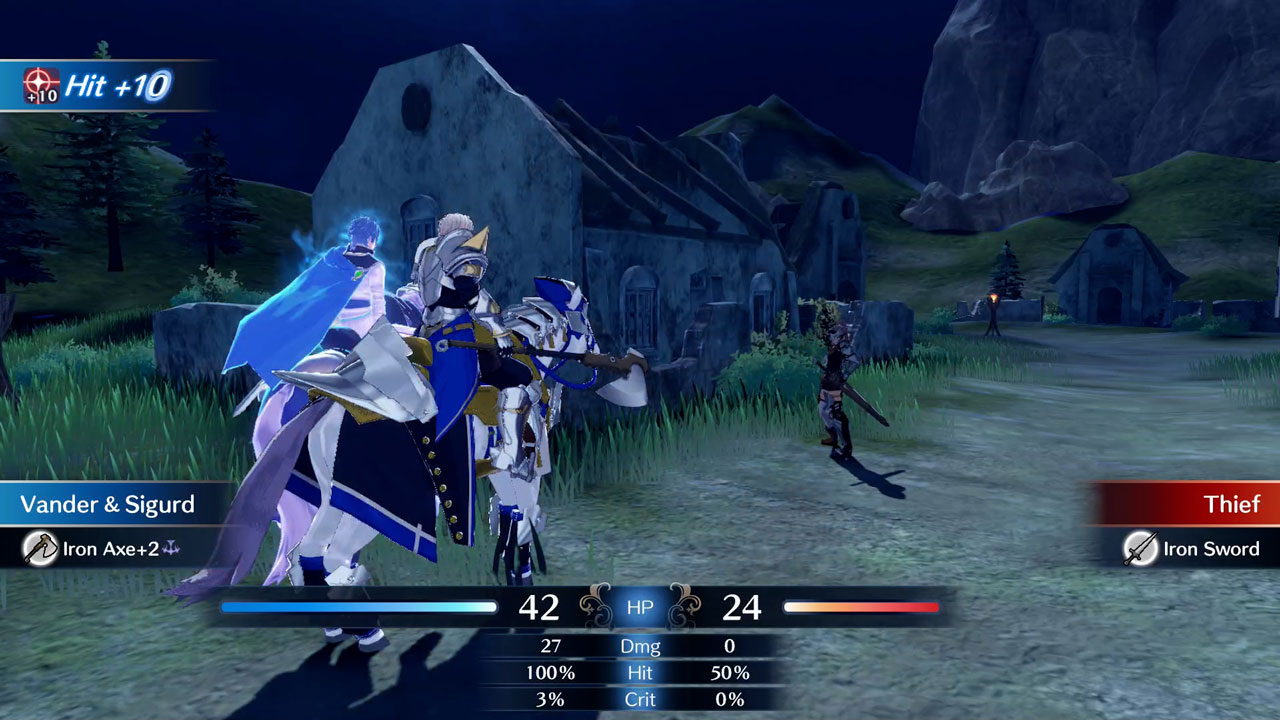
Combat is where Fire Emblem Engage is at its best, though the series’ particular take on turn-based tactics can still feel a little one-note at times. The lack of diversity in scenarios and modifiers may fail to push some players into more inventive and adaptive patterns of play. The premise is going to be familiar to anyone who’s played a turn-based tactics game. The map is divided up into tiles onto which you bring a select number of units, each armed with specific weapons or spells. You move the pieces on the board and attack until your turn is over and it’s the enemy’s turn to do their thing. Rinse and repeat for between around 5 and 15 turns and then it’s back home to the Somniel for tea.
Variety in combat comes first and foremost from the heroes you choose to bring, and it’s a critical choice since you want to ensure you’ve got a good spread of units to rely on. There is a rock, paper, scissors weapon triangle that encourages you to bring a good mix of axes, lances and swords. The natural advantage provided by ranged combat through spells and archery is always desirable. There are other combat techniques like staves, knives, and hand-to-hand combat as well, each with its own unique utility. You want to make sure you’ve got come cavalry, some flying units and some heavy armour, too. In essence, there’s a lot to bring to the table and it’s up to you to finesse the right group composition to get the job done.
Once you have settled on a roster you know you can generally rely on, there’s a very satisfying loop that you settle into where you come to know the unique capabilities of these heroes, playing to maximise their strengths and protect their weaknesses. It always feels excellent to bring your archer up behind the vanguard, position out of reach of the enemy and fire off a deadly volley that will KO them in one hit. Fire Emblem Engage’s combat is less about on-the-fly adaptation, and more about the careful, thoughtful execution of whatever strategy you have committed to by way of your group composition, and it’s always just nice to sink into that.
However, Engage will rarely push you into those more adaptive patterns of play where you needed to respond on the fly, or be more creative about how you utilise your forces or your environment.
The game has elaborate, colourful character designs, impressive combat animations and full motion, animated cutscenes that rival what you’d expect to find in TV shows
Map design is a massive weakness of Fire Emblem Engage. There’s almost no topography to speak of, so you can’t make use of things like dugouts to avoid ranged attacks, nor is there any concept of ‘the high ground.’ There are minimal environmental elements like shrubbery, water, fire, and the like, but it’s exceedingly rare that you would substantially alter your strategy to make use of these tiles. There are no weapons that reference the environment and only one ability in the entire game that allows you to manipulate it in some way. If the environment offered more strategic advantages or disadvantages, or the player had more ability to influence that environment, Fire Emblem would force you to think more creatively than it currently does.
Scenario design also fails to push you into different patterns of play. There are a handful of scenarios here – defending a castle gate, retreating from more dangerous foes, blinded by the fog of war and needing to light torches to see threats lurking in the darkness and so on. While these varied scenarios do exist, they do not force you to play differently. You’re still using the same units, in the same way, running the same overall strategy.
This isn’t a broad criticism of Fire Emblem, since there is great enjoyment to be found in the predictability that its combat is rooted in. You know what every enemy unit is going to do before they do it. The UI clearly shows you how much damage you will deal and sustain. You can see the exact range of enemy foes, allowing you to carefully position one square beyond that before you make your push. There are rarely surprise flanks or unexpected events that turn a battle on its head. Fire Emblem shows its hand, empowering you to play around that hand in a way that is comfortable and satisfying and enjoyable. Having said that, it can feel repetitive, and you may find yourself yearning for more interesting maps, scenarios and events that keep you on your toes.
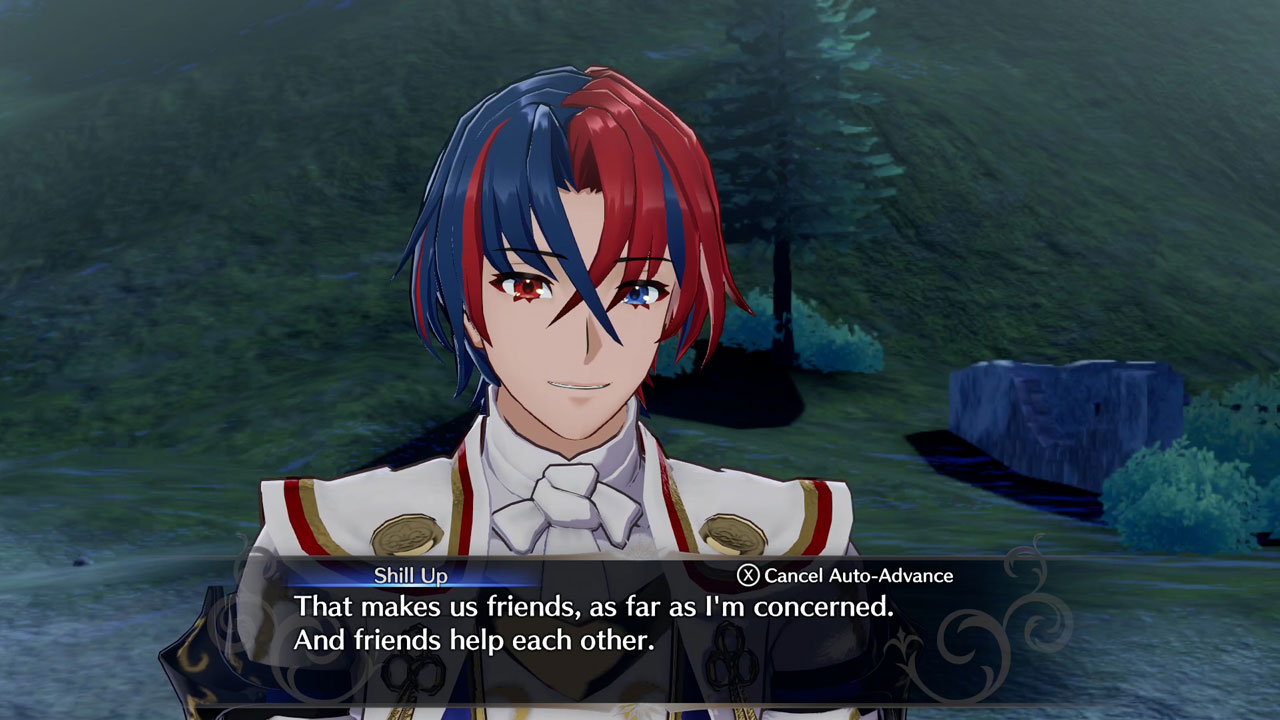
Final Thoughts
None of this is to say that there isn’t enjoyment to be found with Fire Emblem Engage, because there absolutely is. The brilliant character designs, bright colour palette, deep customisation, and satisfying combat loop all made for a really pleasant experience. Particularly on Nintendo’s hand-held since the turn-based nature of the game demands less in the way of graphical processing power, meaning that the final product doesn’t feel at all compromised in a way that a number of recent Switch titles have. But Fire Emblem Engage leaves little impression. If the narrative were more compelling, if the character relationships were deeper or if combat was more varied, there’s every chance that it would have felt more robust and impactful. In the absence of those things, Fire Emblem Engage just feels…fine. It does, it feels fine. It’s the quintessential 7/10 that ultimately doesn’t feel like the future of the franchise. Like the Emblems that are its cornerstone, it feels pulled from the past in a way that may appeal to long-term fans of the series but is unlikely to welcome new ones.
Reviewed on Switch // Review code supplied by publisher
Click here for more information on WellPlayed’s review policy and ethics

- Nintendo
- Nintendo
- Switch
- January 20, 2023



Ralph 'Skill Up' Panebianco is an Australian-based videogames commentator who couldn't hack it in print, so he had to turn to the lowly, scummy, under-handed world of YouTube. There he scratches out a living dolling out lukewarm takes like 'does everyone agree Fallout 76 bad?', while trying to surreptitiously convince people that Destiny 2 is good (it isn't).





